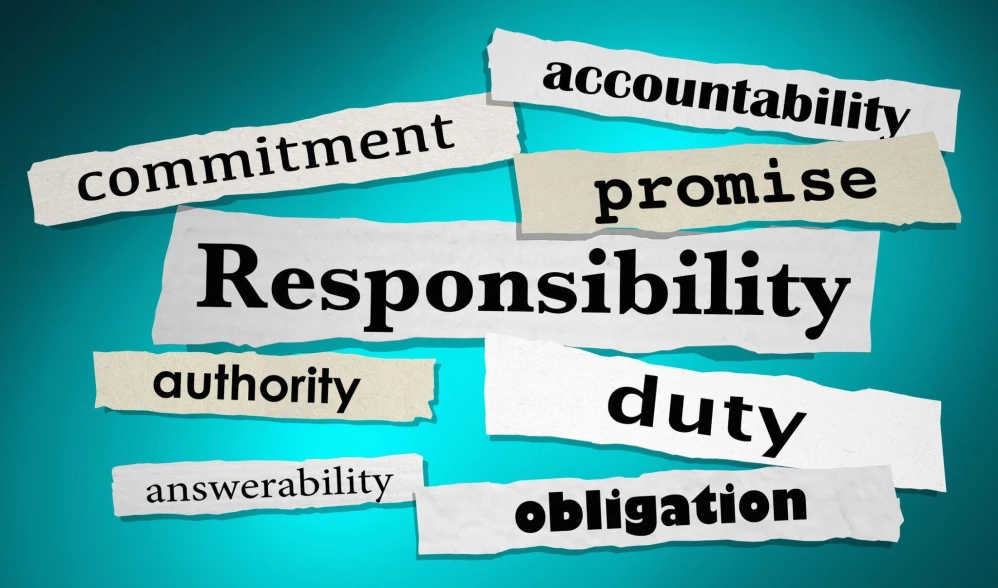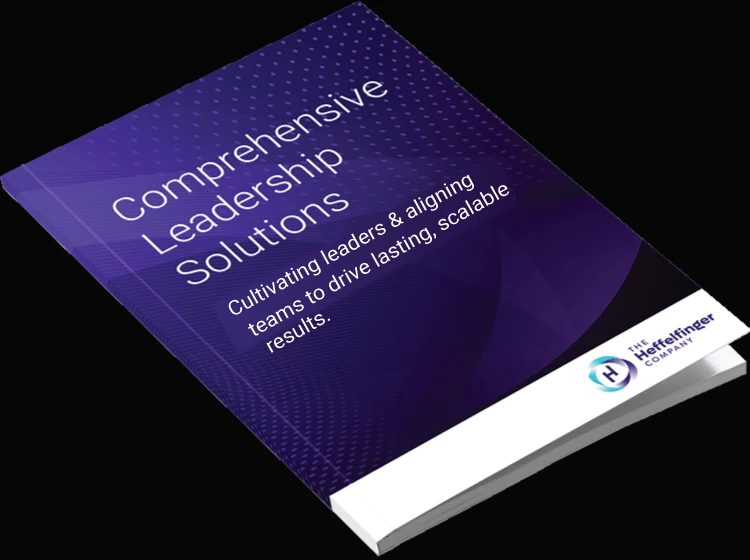“If you do not understand your role in the problem, it is difficult to be part of the solution.”
~ David Peter Stroh
Back in October, we shared a blog that looked into how we see and understand relationships within organizational systems. As a reminder, here’s what that part one covered:
- Seeing the big picture vs. just our part in that whole
- Being able to see the past or what led up to our current experience
- Recognizing that we are often in a systemic relationship with others and not working alone.
If you haven’t read that blog yet, we recommend you check it out before getting too far into this part two. This blog will dive deeper into the nature of systemic relationships. In particular, we’ll cover four different organization system contexts or system roles.
Seeing Patterns of Relationship
In our organizations, we may often think of ourselves as working alone until we encounter a frustrating situation with another. Then we are almost forced to expand our thinking to working with that other person – who could be driving us nuts.
When we enter into these scenarios, we might think that it’s just about the person themselves. Maybe we have different working styles, or our personalities are just too different.
What you may not notice is that it’s often not about the individual people involved at all. Instead, it’s helpful to identify that at work, you’re part of a larger, complex system at play. It’s more than just two people interacting. It’s your respective roles and the often unseen system conditions driving how you work together.
For instance, have you ever struggled to work with a coworker, rejoiced when they left the organization, and then found that it was still difficult to work with their predecessor? Sometimes it’s not about the person in the role; it’s about the larger systems at play.
“Because we don’t see systems – we fall out of partnership with one another. We misunderstand each other, we make up stories about each other, we have myths and prejudices about each other, we hurt and destroy each other, we become antagonistic, we dominate each other and much of the potential of our relationships (the system) is wasted.”
~Barry Oshry
The Four Contexts of Organizational Relationship
To further explain the point, we want to look at four different contexts or types of organizational relationships. In describing these four contexts, we will be using terminology coined by Barry Oshry when he developed the “Power Lab” and “The Organization Workshop,” both of which created a living lab for observing and experiencing system dynamics.
He describes the contexts as Top, Middle, Bottom, and Customer. While each of these contexts at times describes a hierarchical position within an organization, they also describe conditions each of us faces in our organizations and lives. We can move in and out of each of these contexts daily.
The Top Context: Complexity and Accountability
We are in the Top Context when we have been designated as the person(s) responsible for an organization or a part of the organization. And no matter where we are in the organization, we may find ourselves in a Top Context. We know we are Top when we wake up in the middle of the night worried about what we are responsible for while everyone else is sleeping. We may be in the C-Suite, a Project Leader for an important project, or frankly, even as a Parent.
In the Top Context, we experience the system conditions of complexity and accountability – lots of complex inputs to deal with, including difficult issues from within (employee expectations, the ability to deliver on promises to customers) and without (Wall Street expectations, supply chain shortages, legal/political landscape, talent market, competition).
Everyone is looking to you to make complex decisions surrounding strategy, company direction, culture, and more.
The Bottom Context: Vulnerability
We are in the Bottom Context when we are the ones doing the direct work of the organization – making its products or delivering its services. We are often on the receiving end of decisions that affect our lives in major or minor ways (i.e., layoffs, hybrid work policy changes, benefit/policy changes, and new initiatives). All of these decisions happen without our involvement.
No matter where you are in the organization, there is always someone that you feel Bottom to. Senior leaders may feel Bottom to their boards or Wall Street analysts, or external market factors.
The Middle Context: Tearing
While this context often can be used to describe Middle Managers in an organization (Vice Presidents, Directors, Senior Managers, etc.), it refers to anyone who is caught between two or more parties. Others want something different from you AND they each hold you responsible for their wants. For example, this may occur between a spouse or a child, between the Executive Group or the Board, and between Senior Leaders and Employees. This is perhaps the most difficult of all the Contexts and where we find a majority of our clients. It is also can be the space of the greatest leverage for change across an organization.
The Customer Context: Neglect
We are in the Customer context when we have contracted with another organization to provide our goods or services with the expectation of timely delivery and a reasonable price. We experience the condition of neglect when we are not receiving the goods and services we expect.
This could also refer to internal customers – where we are dependent on another person or group to provide us with the product or service we need to do our job.
We don’t take the time to think about what life is like in each of these parts of the system for those living there. This leads to resentments, misunderstandings, and often blame, diminishing our own personal effectiveness and that of the organization.
How Each Context (Role) is Experienced by Others
Those in the Top Context can be seen as arrogant, insensitive, and unresponsive when other parts of the system have new ideas to help the organization. But to the Top, who is struggling in a world of complexity and accountability, it may be seen as another complication in an already complicated world.
People in the Bottom Context can be seen as resistant, unenthusiastic, or unproductive especially, when those at the Top are rolling out new policies and initiatives. But these “new policies” require more change and can be seen by employees as another flavor of the month, lacking real understanding regarding what really matters to the rest of the team. Then, those in the Top conclude that employees just aren’t motivated or productive.
People in the Middle Context are often seen as weak by both those at the Top and Bottom. We sometimes hear “they lack leadership.” A simple request made to someone in the Middle by either someone at the Top or Bottom can come back with a wishy-washy response. Somethings like, “I’ll see what I can do.”
Middles are caught in a world of tearing. They are “caught in the middle” between various parties who want different things from them (i.e., direction, career advice, pay raise/promotion OR status updates on projects, budget cuts, etc.)
Customers are often seen as bothersome. We try to be helpful to customers when they are disgruntled, but instead, we get an angry response back. Customers are in a world of neglect.
When we react to others in these roles or contexts, we get mad, we withdraw, we blame, and we make up stories. Once we do that, we lose personal choice and the possibility of partnership and collaboration with other parts of the system.
Typical Reactions in Each Context
For those at the Top living in a world of complexity and accountability, our reaction is to become burdened and to “suck up” even more responsibility, thinking we must do it all. We don’t make a choice to do this; we do it automatically (an instant reflective action). And the more we do this, the more burdened we become.
As those at the Bottom live in a world of vulnerability, their reaction is to feel oppressed. Again, we don’t make a choice to do this – we do it automatically (an instant reflective action). And the more we do this, the more oppressed we feel. We lose our sense of agency and feel victimized.
As Middles, living in a world of tearing, we tend to slide in between other people’s issues and conflicts. The problems of others become our problems, and we lose our sense of independence. We may overly align with those at the Top or at the Bottom since each holds us accountable to their differing demands. And the more we slide into the Middle, the more torn we become.
As Customers, living in a world of neglect, our experience is one of feeling “screwed.” We have been staying aloof from the supplier, perhaps not explicitly telling the supplier what we need so that when we don’t get it – we feel angry and blameless since it was their responsibility to deliver to us.
In all these situations, blindness to our own reactions within our context results in personal stress, fractured relationships, and reduced organizational effectiveness.
It's important to recognize where we are and how we react. Are we reacting automatically to others in other Contexts (Top, Middle, Bottom, Customer) or are we reacting automatically in our own Contexts? Once we can notice patterns in relationships, we can stop blaming, taking things personally, and have different choices. The choices we make will either take us in or out of collaboration.
Once we understand what others are experiencing, we can have more empathy and find ways to connect to them that takes into account what is happening in their Context.
Our Next Blog - Choices in Systems
Be sure to check out Part 1: Seeing Relationships in Systems
Find out more about how to bring the Organization Workshop to your company -
Click Here to Set Up a Time to Talk
What Our Satisfied Client Has to Say--
“We recently collaborated with The Heffelfinger Company to bring the Organization Workshop to a leading medical school's leadership team to shed light on and provide new tools for working with deeply embedded dynamics in the interactions between leaders and individual contributors and faculty and staff. The quality of the work and their ability to help people see in new ways and gain empathy for others in the organization has already begun to make a difference to improve collaboration and increase teamwork. Everyone felt that this time was well spent and loved learning experientially. They genuinely had fun. Our client described Lori & Sophie as “master facilitators”--their ease and fluidity with the group and the content were always evident. It’s exactly what we were hoping for.
Many thanks to the Heffelfinger Team”
~ Kari Granger, CEO The Granger Network
Let’s work together to help YOU bring powerful, positive change to your organization,
Lori
Lori Heffelfinger and James Jackman
Supporting Business Leaders to transform cultures, teams, and workplaces.
Bibliography:
Oshry, Barry (2007): Seeing Systems: Unlocking the Mysteries of Organizational Life
Oshry, Barry (2010): People in Context the Systems Thinker
Oshry, Barry: The Organization Workshop (The Heffelfinger Company has been a licensed provider of this workshop since 2010)







